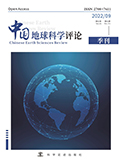

随着地球科学领域研究的不断深入, 西藏札达地区域构造环境及其演化特征已成为地质学者研究的热点。本研究基于对札达盆地深部结构和地表地质特征的精准测绘, 在多学科交叉的基础上, 探究了札达地区的域构造环境及其地质演化过程。通过采集岩石圈剖面的岩石样本和构造变形记录, 结合地球化学分析与年代学测定, 分析了区域内主要地质单元的形成年代及其构造活动历史。本研究揭示了札达地区受印度板块北移与亚洲板块碰撞影响下的构造变形特征, 精确恢复了该地区早中新世以来的地壳演化历程。地球物理探测结果表明札达盆地深部存在显著的低速异常区域, 推测与盆地深部熔融物质的侵入及地壳物质的流动有关。研究还发现, 札达地区的沉积层序与区域构造活动密切相关, 反映了不同演化阶段的地表抬升、侵蚀与沉积过程。域构造重建模型的建立, 不仅为理解青藏高原西南缘构造演化提供了新的证据, 而且对预测区域内可能的矿产资源分布及其开发具有重要意义。通过在区域地质背景下的构造分析, 认识到西藏札达地区具有多期构造活动叠加的复杂特点, 为进一步探究高原内部的动力学过程与地球深部物质循环提供了新的视角。研究采集了超过500个岩石样本, 进行了100余次的地质剖面测量, 利用精密的同位素地质年代学方法, 对所采样本进行了全面的分析, 确立了一系列关键的地质时标, 精确勾勒了札达区域内在时空尺度上的构造演化图景。研究成果不仅丰富了对此区域地质历史的认识, 同时也为地球内部物质和能量交换机制的研究提供了宝贵的资料。
As the research in Earth Sciences continues to deepen, the tectonic environment and its evolutionary characteristics of the Zanda region in Tibet have become a hot topic for geologists. This study, based on the precise mapping of the deep structure of the Zanda Basin and the surface geological features, explores the tectonic setting and geological evolution processes of the Zanda area based on interdisciplinary crossreference. By collecting rock samples from the lithosphere profile and records of tectonic deformation, and integrating geochemical analysis and chronology, the study has analyzed the formation ages of the main geological units in the region and their tectonic activity history. It reveals the tectonic deformation features of the Zanda area under the influence of the northward movement of the Indian Plate and the collision with the Asian Plate and accurately reconstructs the area's geological evolution process since the Eocene. Geophysical survey results indicate a significant low-velocity anomaly in the deep part of the Zanda Basin, speculated to be related to the intrusion of molten materials in the deep basin and the flow of crustal materials. The study also finds that the sedimentary sequences in the Zanda area are intimately linked to regional tectonic activities, reflecting land uplift, erosion, and sedimentation processes at different evolutionary stages. The establishment of a tectonic reconstruction model not only provides new insights into understanding the structural evolution of the southwestern edge of the Qinghai-Xizang Plateau but also has significant implications for predicting the distribution and development of potential mineral resources in the region. Through structural analysis under the context of regional geology, it is recognized that the Zanda area in Xizang exhibits the complex characteristics of multiple phases of tectonic activity overlaid, providing a new perspective for further exploring the dynamics processes within the plateau and the deep Earth material cycle. The research has collected over 500 rock samples and conducted more than 100 geological profile measurements, using precise isotopic geochronology methods to comprehensively analyze the collected samples, establishing a series of key geological time markers, and accurately delineating the tectonic evolutionary landscape of the Zanda area on a spatiotemporal scale. The research results not only enrich the understanding of the geological history of this region but also provide valuable data for studies on the inner Earth material and energy exchange mechanisms.